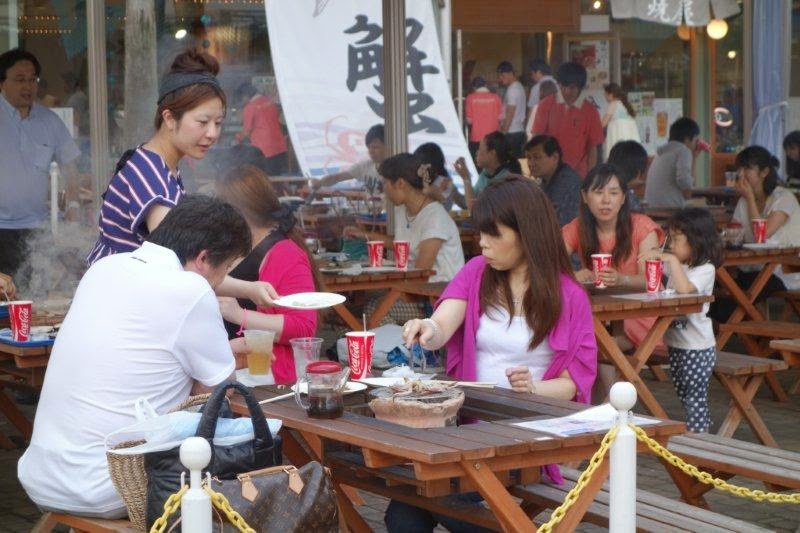It is nice to be home, and to enjoy a glorious summer with my loved one.
What better to experience the summer by being outdoors. So we went to visit the Claremont Landscape Gardens at Esher, Surrey. It is described as a royal garden and once a playground for princesses. But it was not the royal connection we went for, we wanted to be outdoors, to enjoy the sunshine and the fresh air, but to be away from the crowds. I've found that since returning from Japan, I have had to re-accustome myself to the deafening noise of the crowds e.g. in a crowded restaurant, and to close my ears to the incessant commands of parents telling their children not to do this and not to do that.
It was the first time that I came across a landscape amphitheater: the physical texture, human scale, visual detail, and beauty all work together to produce an engaging atmosphere. At the top of the amphitheater, there was a bench which a family had taken possession of, with a pram, food, etc. all laid out; they had simply appropriated it for the day.
What tickled my fancy were the play things laid out for children inside the thatched cottage: from playing cards to a wooden train layout, costumes and hats to children's riding horse toys. Growing up as a child in Hong Kong, I had no access to such an array of toys, and for a while I tried to imagine the make belief world of children donning the costumes and the hats.
When I saw these levelled pieces of tree trunks, I could not help myself stepping onto them and walking along them. Since seeing an osteopath who has been treating me for imbalance due to the tightening up of my thorax, I have been able to experience the joy of being able to stand on one foot without toppling over.
What better to experience the summer by being outdoors. So we went to visit the Claremont Landscape Gardens at Esher, Surrey. It is described as a royal garden and once a playground for princesses. But it was not the royal connection we went for, we wanted to be outdoors, to enjoy the sunshine and the fresh air, but to be away from the crowds. I've found that since returning from Japan, I have had to re-accustome myself to the deafening noise of the crowds e.g. in a crowded restaurant, and to close my ears to the incessant commands of parents telling their children not to do this and not to do that.
 |
The man made lake, a centre piece of the garden |
 |
The man made amphitheater overlooking the lake |
 |
The thatched cottage |
 |
Children's playground |
 |
Walkway made from tree trunks |
































